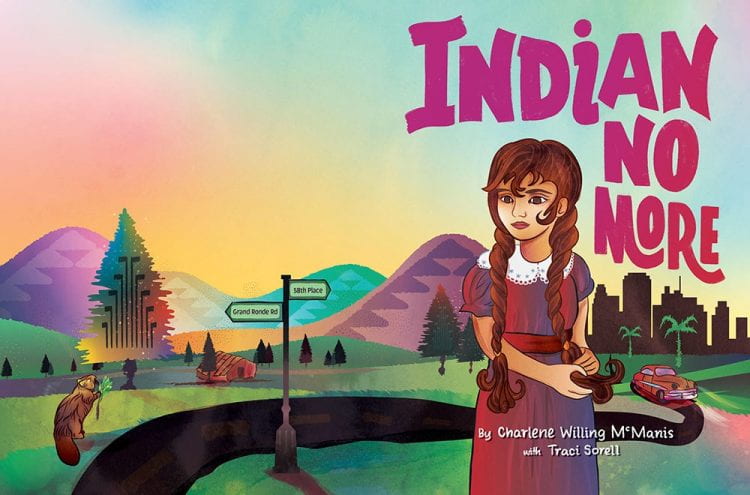By Charlene Willing McManis with Traci Sorrell
Winner of the 2020 American Indian Youth Literature Award for Best Middle Grade Book
In 1954, the Umpqua tribe was terminated. If you aren’t aware of this shameful chapter of history, don’t be surprised. As Debbie Reece writes in her excellent review of the book, it is rarely taught in schools or included in history textbooks. Charlene Willing McManis fills this gap with this captivating middle grades novel, Indian No More.
Indian No More tells the story of Regina Petit, a ten year old Umpqua girl living with her sister, parents, and grandmother on the Grand Ronde reservation in Oregon. The story is told by Regina, narrated in the first person, and begins,
Before being terminated, I was Indian. Now I certainly don’t mean I was killed off or anything. It was 1954. The United States government didn’t do that anymore. They just filed away our tribal role numbers. Erased our reservation from the map.
Regina’s dad is determined to make the best of things so he signs the family up for the Indian Relocation Program and moves them to Los Angeles, California. Most of the novel takes place in LA as Regina and her family learn how to adjust to life in the suburbs where the only Indians people know are Tonto on the Lone Ranger. This is made painfully clear when Regina is made one of the Indians in her school’s performance of the first Thanksgiving. The chapter closes with Chich, Regina’s grandmother, helping her take off the lipstick stripes on her cheeks with cold cream. Chich is an anchor in the book; you can almost feel her hands wiping off the awful stripes while she tells Regina a story.
Regina makes friends with the neighborhood children and while she misses her home and worries throughout the book about “not being Indian,” she adjusts and enjoys common 10 year old things: playing , watching television with her neighbors, and listening to Chich tell stories. However resilient the main character is, however, there is no question of all she has lost. Even the new television set her dad brings home can’t replace the home that was taken from her. The theme of loss weaves its way through the book as Regina grapples with what it means to be Indian.
While there is no denying the heavy themes of the book, the story is also one of survival and pride. Chich tells Regina about the history of the Umpqua and their relocation to the reservation where Regina was born,
It can be seen as a sad story. It is also a proud story. Many more tribes were removed and brought to Grand Ronde to form our community. The story shows our people survive. Even is the harshest conditions.
The back matter of the book is excellent, providing definitions, a pronunciation guide and photos of the author, Charlene, Willing McMantis, on whom the story is based. I can see the back matter being an on-going reference in the classroom.
Indian No More is written for middle grades audience (4th-6th) but could be used in earlier grades as a teacher Read-Aloud or older grades as a history supplement. I enjoyed it as an adult reader and it inspired me to research the topic.
Check out this exhibit by Pamela J. Peters, an Indigenous multimedia documentarian.
Of course, it is particularly relevant for Oregon students (all 4th grade students in Oregon should read this book) and would work beautifully alongside the 4th, 6th, or 8th grade curriculum found on the tribal website HERE.
You can learn more about Indian termination & relocation HERE. Read, learn, and then share this wonderful book with a child.

